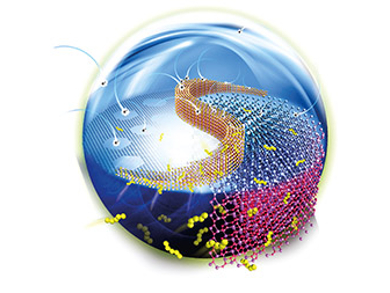In this issue, K. Walczak et al. review the modeling, simulation, and implementation of solar-driven water-splitting devices. How can design guidelines for semiconductors, electrocatalysts, as well as liquid and membrane electrolytes be obtained? R. G. Cooks et al. summarize organic reactions in microdroplets in a Minireview. The Highlight deals with the progress of single-entity electrochemistry to cell counting (J. J. Gooding).
In the Communications section, Q. Zhang et al. report on enhanced electrochemical kinetics on conductive polar mediators for lithium–sulfur batteries (see picture). C. Schmuck et al. used an octapeptide–guaninocarbonylpyrrole conjugate to form a supramolecular β-helix that self assembles into pH-responsive fibers. B. List et al. found extremely active organocatalysts to enable a highly enantioselective addition of allyltrimethylsilane to aldehydes. J. Zhang and L. Dai describe a tri-doped graphene material as a multifunctional catalyst for self-powered electrochemical water splitting.
- Angewandte Chemie 42/2016: Splitting Water(s),
Angew. Chem. Int. Ed. 2016, 55 (42).




